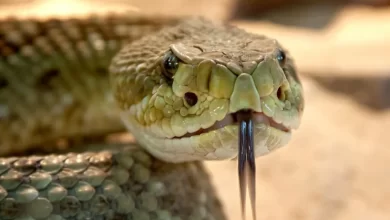Labrador Retriever is a popular and beloved dog breed known for its friendly and outgoing nature. Labradors are medium to large-sized dogs with a sturdy build and a sleek, water-resistant coat. They are highly versatile and excel in various roles, including as family pets, service dogs, search and rescue dogs, and assistance dogs. Labradors are renowned for their intelligence, loyalty, and trainability, making them a favorite choice for families and individuals alike. They are generally good with children and other pets, displaying a gentle and patient demeanor. Labradors have a natural affinity for water and are excellent swimmers, thanks to their webbed feet and otter-like tail. They thrive on regular exercise and enjoy activities such as retrieving, swimming, and playing fetch. With their kind and sociable disposition, Labrador Retrievers make wonderful companions for people of all ages and lifestyles.
- Labrador Retrievers, often referred to as Labs, originated in Newfoundland, Canada. They were initially bred as working dogs to help fishermen retrieve nets and catch fish. Their water-resistant coat, strong swimming abilities, and natural retrieving instincts made them well-suited for these tasks.
- Labradors are medium to large-sized dogs with a well-balanced and muscular build. They have a broad head, expressive eyes, and drop ears. Labradors have a short, dense, and weather-resistant double coat that comes in three recognized colors: black, yellow, and chocolate.
- Labradors are known for their friendly and gentle nature. They are typically outgoing, sociable, and highly affectionate. They are often described as being good-natured and patient, making them excellent family pets and companions.
- Labrador Retrievers are intelligent dogs and rank among the top breeds in terms of trainability. They are quick learners and eager to please their owners. Labs excel in obedience training, as well as in various dog sports and activities such as agility, tracking, and search and rescue work.
- Labradors are energetic dogs that require regular exercise to keep them physically and mentally stimulated. They enjoy activities like playing fetch, swimming, and going for long walks or hikes. Engaging in regular exercise helps prevent behavioral issues that can arise from boredom or pent-up energy.
- Labradors are generally known for being good with children of all ages. They are patient, gentle, and tolerant, making them an ideal choice for families. Labradors also tend to get along well with other pets, including cats and other dogs, when properly socialized from a young age.
- Labradors have a long history of being working dogs in various fields. They are often employed as service dogs, guide dogs for the visually impaired, search and rescue dogs, therapy dogs, and assistance dogs for individuals with disabilities. Their intelligence, adaptability, and strong work ethic make them well-suited for these roles.
- Labradors are generally a healthy breed, but like any dog, they can be prone to certain health conditions. Some common health concerns in Labradors include hip and elbow dysplasia, progressive retinal atrophy (PRA), exercise-induced collapse (EIC), and obesity. Regular veterinary check-ups, a balanced diet, and exercise are essential for their overall health and well-being. On average, Labradors have a lifespan of 10 to 12 years.
- Labrador Retrievers consistently rank as one of the most popular dog breeds worldwide. Their friendly nature, versatility, and suitability for families contribute to their enduring popularity among dog lovers.
- There are around 3 Crore Labrador retriever dogs in the world.
- Labradors have a strong natural instinct for retrieving objects. This instinct stems from their history as fishing dogs, where they would retrieve game and nets from the water. They have a soft mouth, which means they can carry items without damaging them.
- Labradors have a love for water and are excellent swimmers. Their webbed feet and otter-like tail contribute to their swimming abilities. They enjoy activities such as swimming, retrieving objects from water, and participating in water sports like dock diving.
- Due to their intelligence, trainability, and friendly nature, Labradors are commonly used as guide dogs for people with visual impairments. They assist their handlers by navigating obstacles, providing support, and helping them lead independent lives.
- Labradors also serve as assistance dogs for individuals with various disabilities. They are trained to perform tasks such as opening doors, retrieving objects, providing balance support, and alerting to medical conditions like seizures or diabetic emergencies.
- Labradors’ keen sense of smell and their ability to focus and track scents make them valuable search and rescue dogs. They are often used in search operations for missing persons, disaster response efforts, and locating evidence in criminal investigations.
- Labradors’ friendly and gentle nature, along with their ability to bond with people, makes them excellent therapy dogs. They visit hospitals, nursing homes, schools, and other settings to provide comfort, companionship, and emotional support to individuals in need.
- Labradors are commonly involved in retriever trials, which are competitive events that test their retrieving skills, obedience, and teamwork with their handlers. These trials simulate real-life hunting scenarios and showcase the breed’s natural abilities.
- Labradors have a short, dense double coat that sheds moderately year-round. Regular brushing helps to keep their coat healthy and reduce shedding. They may require more frequent brushing during shedding seasons. Labradors also tend to be prone to ear infections, so regular ear cleaning is necessary.
- Labradors have made their mark in popular culture. Notable Labradors include “Marley” from the book and movie “Marley & Me,” “Buddy” from the film “Air Bud,” and “Duke” from the animated film “The Secret Life of Pets.”
- Labradors are known for their healthy appetite and love for food. This makes them highly food motivated, which can be advantageous when it comes to training and obedience. However, it’s important to monitor their food intake and maintain a balanced diet to prevent obesity.
- Labradors have an exceptional sense of smell, which makes them well-suited for various scent detection tasks. They are employed as sniffer dogs for detecting drugs, explosives, and other illicit substances. Their olfactory abilities and focus make them valuable assets in law enforcement and security roles.
- Labrador Retrievers are often used in crossbreeding to create designer dog breeds such as Labradoodles (Labrador Retriever + Poodle) and Goldadors (Labrador Retriever + Golden Retriever). These crosses combine the desirable traits of Labradors with other breeds, resulting in unique hybrid dogs.
- Labradors have set impressive records in the field of retrieving. One notable Labrador named Endal received worldwide recognition for his extraordinary skills, including retrieving items, helping his disabled owner, and even using an ATM machine to withdraw cash.
- Labradors have a water-resistant coat that helps protect them from harsh weather conditions. Their dense coat keeps them warm in cold temperatures and aids in keeping them dry when swimming or in wet environments.
- Labradors have shown to be particularly effective as therapy dogs for individuals with autism spectrum disorders. Their calm and gentle nature, along with their ability to bond and provide emotional support, can be highly beneficial in assisting individuals with autism.
- Some trained Labradors have the ability to detect changes in blood sugar levels in individuals with diabetes. They can be trained to provide early alerts when blood sugar levels are too high or too low, allowing their handlers to take necessary actions.
- Labradors are very active dogs that are have good athletic shape. So, they can run between 20 and 30 miles per hour. They can easily hit a top running speed of 30 miles per hour if they get enough exercise and train their bodies.
- Labrador Retrievers hold several records in the dog world. One notable achievement is their consecutive streak as the most popular dog breed in the United States, according to American Kennel Club (AKC) registrations, which has lasted for many years.
- Labradors have a dense, short double coat that is water-repellent. This unique coat helps to insulate them in cold water and provides protection against harsh weather conditions. It also aids in drying off quickly after swimming.
- Labradors have a soft mouth, which means they can carry objects, including delicate items, without causing damage. This trait is especially useful during hunting and retrieving activities, as well as when interacting with children and handling objects carefully.
- Labrador Retrievers can be divided into two primary lines: working line and show line. Working line Labradors are bred for their working abilities and often have a higher energy level, while show line Labradors are bred with a focus on conforming to breed standards and are often more laid-back in temperament.
- Labrador Retrievers share common ancestry with other retriever breeds, such as the Golden Retriever, Chesapeake Bay Retriever, and Flat-Coated Retriever. These breeds were developed for their retrieving skills and have similar characteristics and instincts.
- Labradors have proven to be exceptional service dogs in various fields. They are employed as guide dogs for the blind, hearing dogs for the deaf, mobility assistance dogs, therapy dogs, and PTSD (Post-Traumatic Stress Disorder) service dogs. Their intelligence, trainability, and gentle nature make them well-suited for these important roles.
- Labradors have been featured in various movies, TV shows, and books. Some well-known Labrador characters include “Hooch” from the movie “Turner & Hooch,” “Pongo” and “Perdita” from the Disney film “101 Dalmatians,” and “Old Drum” from the novel “Old Drum” by Elmo Ingenthron.





